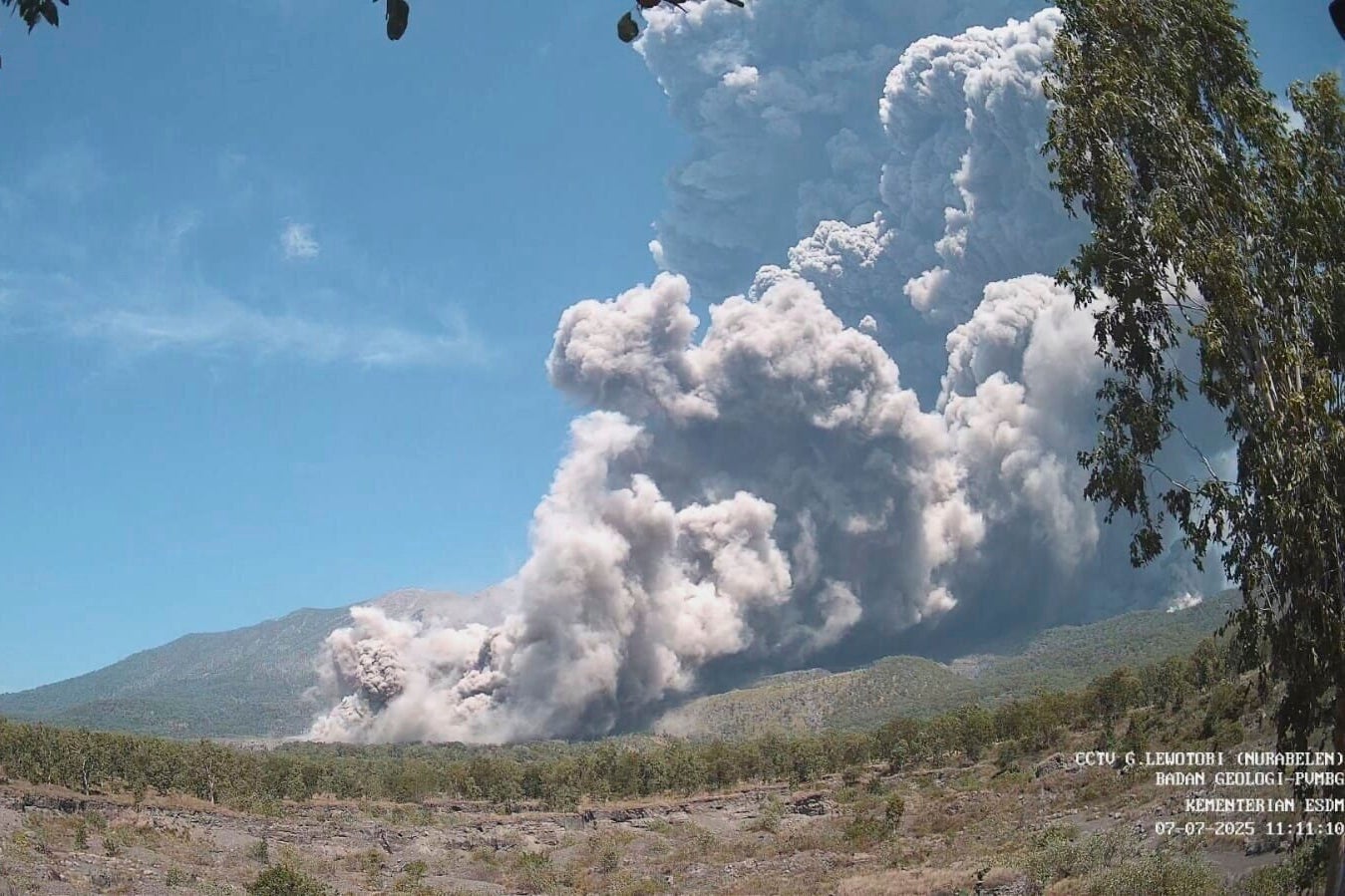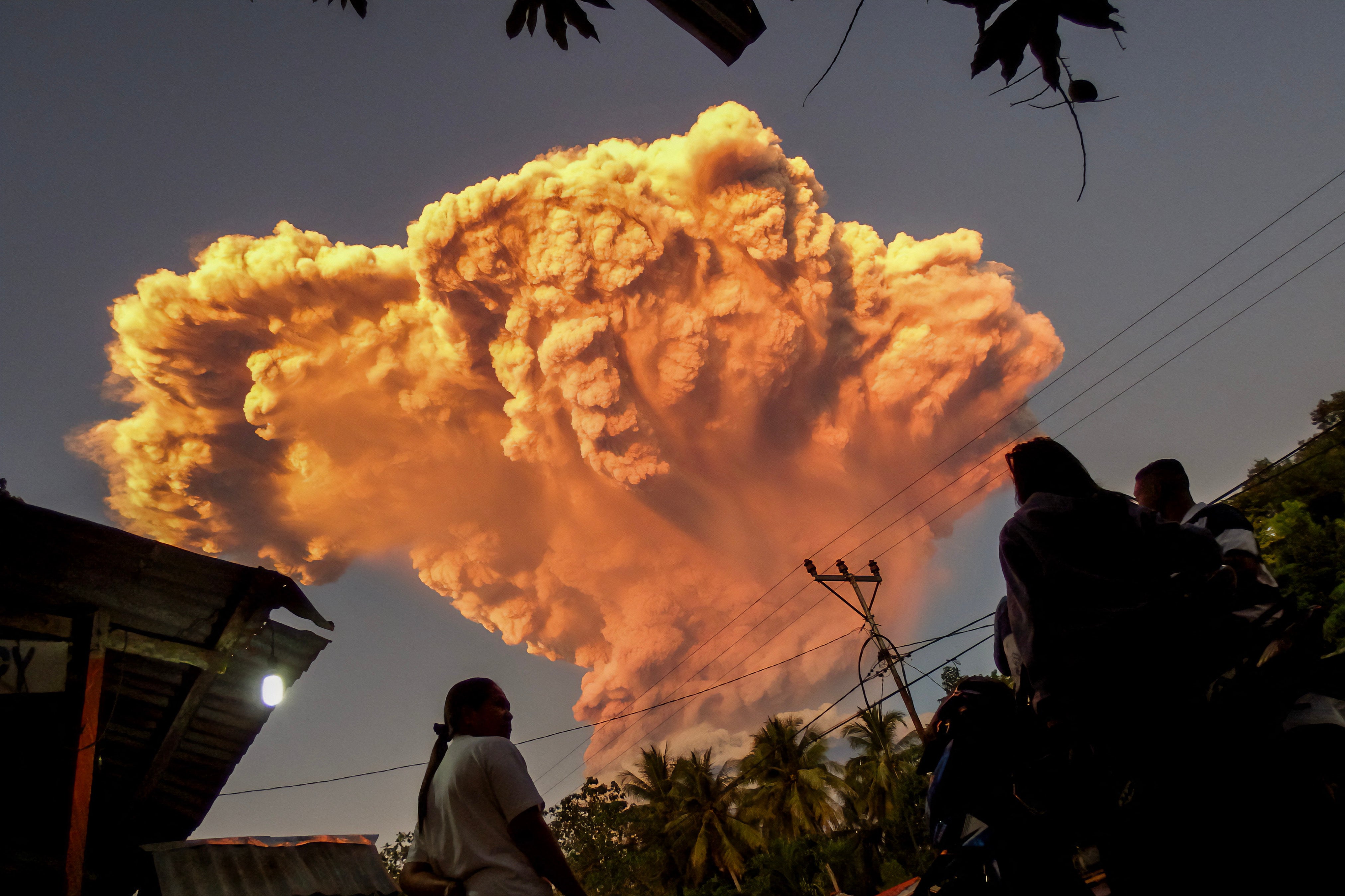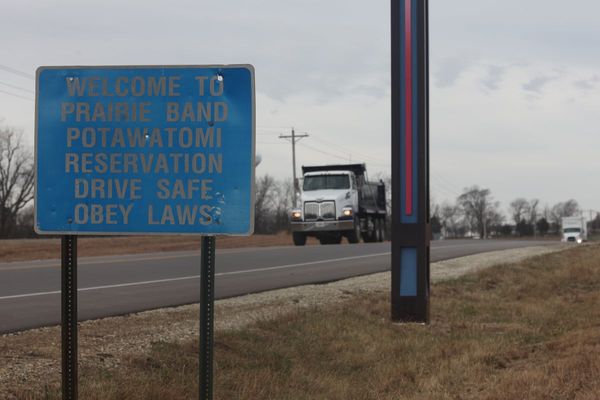Mount Lewotobi Laki Laki in south-central Indonesia has erupted for a second consecutive day, blanketing villages in thick volcanic ash.
Residents have been forced to wear masks as roads and green rice fields are covered in the choking dust.
Tuesday's dawn eruption sent lava and clouds of ash up to four kilometres (2.4 miles) high.
This followed a dramatic Monday, which saw a midday blast propel volcanic material 18 kilometres (11 miles) into the sky, and an evening burst that spewed lava and sent volcanic ash as high as 13 kilometres (8miles) into the air.
Photos and videos circulating on social media showed terrified residents running for their lives under a rain of ash and gravel.
Motorists struggled to navigate in the severely reduced visibility as the ash clouds from Monday's eruption expanded into a distinctive mushroom shape.
Abdul Muhari, a spokesperson for the National Disaster Mitigation Agency, confirmed no casualties from the latest activity.

The volcano has been at its highest alert level since 18 June, with its exclusion zone expanded to a seven-kilometre (4.3-mile) radius.
“People around the volcano have increasingly understood how to minimise the impact of disaster risks as eruptions became more frequent since the end of 2023,” Mr Muhari said in a statement.
The eruptions of the volcano on Flores Island affected more than 10,000 people in 10 villages in East Flores and Sikka districts, according to initial assessments by the local disaster management agency.
Thick volcanic ash and rocks were reported to have fallen in villages of Nawakote, Klantanio, Hokeng Jaya, Boru, Pululera and Wulanggitang, where roads and green rice fields were transformed into grey thick mud and rocks, said Very Awales, an public information official at Sikka district administration.
He added that schools had been closed in the affected areas since Monday to protect students and staff from various hazards due to volcanic activities.
“The smell of sulfur and ash hung so thickly in the air that breathing was painful.”
Authorities distributed 50,000 masks and urged residents to limit outdoor activities to protect themselves from volcanic materials. Residents were also urged to be vigilant about heavy rainfall that could trigger lava flows in rivers originating from the volcano.
The eruption of Lewotobi Laki Laki followed its eruption in November 2024, which killed nine people and injured dozens.
The Geology Agency recorded an avalanche of searing gas clouds mixed with rocks and lava traveling up to 5 kilometres (3 miles) down the slopes of the 1,584-meter (5,197-foot) mountain Monday.

Observations from drones showed lava filling the crater, indicating deep movement of magma that set off volcanic earthquakes. Volcanic materials, including hot thumb-size gravel, were thrown up to 8 kilometres (5 miles) from the crater.
Mr Muhari said two airports in the cities of Maumere and Larantuka in East Nusa Tenggara province remained closed on Tuesday.
Dozens of flights to and from the Ngurah Rai international airport on the resort island of Bali were delayed or cancelled, but airport spokesperson Ahmad Syaugi Shahab said the airport was running normally despite the cancellations, as monitoring showed the volcanic ash had not affected Bali’s airspace.
Monday's initial eruption of Lewotobi Laki Laki was one of Indonesia’s largest since 2010 when Mount Merapi, the country’s most volatile volcano, erupted on the densely populated island of Java. That killed 353 people and forced over 350,000 people to evacuate.
Indonesia is an archipelago of more than 280 million people with frequent seismic activity. It has 120 active volcanoes and sits along the “Ring of Fire”, a horseshoe-shaped series of seismic fault lines encircling the Pacific Basin.







